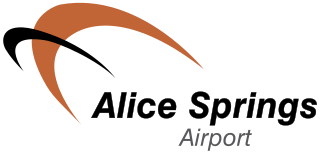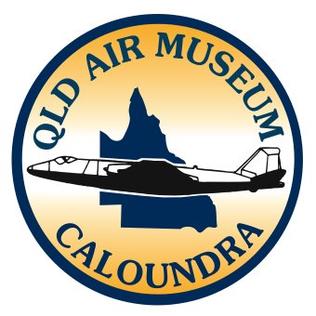
Trans Australia Airlines (TAA), renamed Australian Airlines in 1986, was one of the two major Australian domestic airlines between its inception in 1946 and its merger with Qantas in September 1992. As a result of the "COBRA" project, the entire airline was rebranded Qantas about a year later with tickets stating in small print "Australian Airlines Limited trading as Qantas Airways Limited" until the adoption of a single Air Operator Certificate a few years later. At that point, the entire airline was officially renamed "Qantas Airways Limited" continuing the name and livery of the parent company with the only change being the change of by-line from "The Spirit of Australia" to "The Australian Airline" under the window line with the existing "Qantas" title appearing above.

Air Vanuatu is an airline with its head office in the Air Vanuatu House, Port Vila, Vanuatu. It is Vanuatu's national flag carrier, operating to Australia, New Zealand, New Caledonia and points in the South Pacific. Its main base is Bauerfield International Airport, Port Vila.

Ansett Australia was a major Australian airline group, based in Melbourne, Australia. The airline flew domestically within Australia and from the 1990s to destinations in Asia. After operating for 65 years, the airline was placed into administration in 2001 following a financial collapse and subsequent organised liquidation in 2002, subject to deed of company arrangement. The last flight touched down on 5 March 2002.

Air Niugini Limited is the national airline of Papua New Guinea, based in Air Niugini House on the property of Port Moresby International Airport, Port Moresby. It operates a domestic network from Port Moresby to 12 major airports while its subsidiary company, Link PNG, operates routes to minor airports. It also operates international services in Asia, Oceania, and Australia on a weekly basis. Its main base is Port Moresby International Airport, which is located in 7 Mile, Port Moresby, Papua New Guinea. Niugini is the Tok Pisin word for New Guinea.

East-West Airlines was an Australian regional airline founded in Tamworth, New South Wales in 1947. It operated to major regional city-centres and connected these centres to various state capitals, and by the 1980s it was Australia's third largest domestic airline. It also carried out its own heavy maintenance in Tamworth and operated a network of Travel Centres.

Townsville Airport is a major Australian regional airport that services the city of Townsville, Queensland. The airport is also known as Townsville International Airport, and Garbutt Airport, a reference to its location in the Townsville suburb of Garbutt. Townsville Airport is serviced by major Australian domestic and regional airlines, and in 2011/12 handled 1.7 million passengers making it the 11th busiest airport in Australia.

Ansett New Zealand was an airline serving the New Zealand domestic market between 1987 and 2001. It was a subsidiary of Ansett Transport Industries. In order to comply with regulatory requirements relating to the acquisition of Ansett Transit Industries by Air New Zealand, Ansett New Zealand was sold to News Corporation and later to Tasman Pacific Airlines of New Zealand in 2000, operating as a Qantas franchise under the Qantas New Zealand brand. It went into receivership and subsequently liquidation in 2001.

Alice Springs Airport is an Australian regional airport 7 nautical miles south of Alice Springs, Northern Territory. The airport was notably involved in Australia's first domestic airline hijacking, and later a suicide attack by a former airline employee which claimed the lives of four others.

Burnie Airport, also called Burnie Wynyard Airport or Wynyard Airport, is a regional airport located adjacent to the town of Wynyard, about 17 kilometres (11 mi) west from Burnie, Tasmania, Australia. Formally named the Wynyard Aerodrome, the first official opening occurred on 26 February 1934. The Burnie Airport is majority owned by the Burnie City Council.

Madang Airport, is an airport located in Madang, Papua New Guinea.
The Australian Federation of Air Pilots (AFAP) is a professional association and industrial organisation for commercial pilots in Australia.

Mount Gambier Regional Airport is an airport in the Limestone Coast, South Australia.
The Oswald Watt Gold Medal is an Australian aviation award named for Oswald Watt (1878–1921), a decorated pilot in World War I.
The history of Air New Zealand, the national carrier of New Zealand, began when the amalgamated East Coast Airways and Cook Strait Airways began operations in January 1936 as Union Airways of New Zealand, the country's first major airline. Union Airways was the sole New Zealand aviation partner in Tasman Empire Airways Limited (TEAL), which made its inaugural flight in 1940. The New Zealand Government bought full ownership of TEAL in 1961 and the airline was renamed Air New Zealand in 1965. New Zealand's domestic airline, National Airways Corporation (NAC), was merged with Air New Zealand in 1978. Air New Zealand was privatised in 1989 but in 2001 the New Zealand Government took up 80% ownership in return for injecting $885 million after the airline ran into financial difficulty. In November 2013, the National Government sold down its share in Air New Zealand from 73% to 53% as part of its controversial asset sales programme.
The Daly Waters Airfield, also RAAF Base Daly Waters, is a former commercial and sporadically-used military airfield located at Daly Waters, Northern Territory, Australia. As an airfield on Australia's earliest international routes, Daly Waters was used throughout the 1920s and 1930s as a stop over for commercial airlines operating on the domestic route to Western Australia and international carriers flying from Australia into south-east Asia via Darwin. During World War II, the airbase was used by the Royal Australian Air Force (RAAF) and the United States Army Air Force to undertake combat operations against the Japanese in New Guinea, the Dutch East Indies and the islands to Australia's north. Following the war, the airbase was used commercially again up until the 1970s when the airfield was sporadically-used by the RAAF.
The Two Airlines Policy was a policy of the Government of Australia from the late 1940s to the 1990s. Under the policy, only two airlines were allowed to operate flights between state capital cities and between capitals and nominated regional centres. The Two Airlines Policy was a legal barrier to new entrants to the Australian aviation market. It restricted intercapital services to the two major domestic carriers. This anti-competitive arrangement ensured that they carried approximately the same number of passengers, charged the same fares and had similar fleet sizes and equipment.

Lester Joseph Brain, AO, AFC was a pioneer Australian aviator and airline executive. Born in New South Wales, he trained with the Royal Australian Air Force (RAAF) before joining Queensland and Northern Territory Aerial Services (Qantas) as a pilot in 1924. He was awarded the Air Force Cross in 1929, after locating the lost aircraft Kookaburra in northern Australia. Having risen to Chief Pilot at Qantas by 1930, he was appointed Flying Operations Manager in 1938. As a member of the RAAF reserve, Brain coordinated his airline's support for the Australian military during World War II. He earned a King's Commendation for his rescue efforts during an air raid on Broome, Western Australia, in 1942, and was promoted to wing commander in 1944.

On the evening of 30 November 1961, Ansett-ANA Flight 325, a service from Sydney to Canberra, Australia, operated by a Vickers Viscount propliner, broke up in mid-air and crashed shortly after takeoff, when it encountered a severe thunderstorm. All 15 people on board were killed.

The Queensland Air Museum is a not-for-profit community-owned aviation museum located at Caloundra Airport in Queensland, Australia. Its mission is to collect and preserve all aspects of aviation heritage with an emphasis on Australia and Queensland. The museum has the largest collection of historical aircraft in Queensland and it also has a large collection of aircraft engines, equipment, artefacts, photographs and books.
Lloyd Aviation was an Australian regional airline established in 1969. The airline ceased operations on 30 September 1990.













